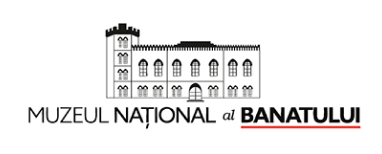The beginnings of the weapons collection within the Banat Museum in Timişoara are closely related to the first years of existence of the History and Archeology Society of Timişoara, a society founded in 1872 at the initiative of the Banat cultural-scientific elite.
The historical weapons collection of the Timişoara Museum today includes several hundred pieces, most of the objects coming from the old collection of the museum (period 1872-1914), where they arrived as a result of donations, acquisitions, archaeological discoveries or after the exchange of objects, a practice existing in the first years of the Society.
The collection of knives, more numerous and spectacular than that of firearms, falls chronologically between the sec. the 10th and the years of the Second World War, including the whole range of weapons: military, civilian, parade, hunting, fencing, etc.
The collection of firearms temporarily covers the time period between sec. XVI and the First World War. The firearms from the patrimony of the Banat Museum are of several types: military, civilian, hunting, shooting, etc.
Regarding the space of origin of the weapons in the collection, the vast majority of military pieces are of Central European origin. A special category is represented by the Balkan and Turkish pieces, quite numerous, represented especially by the yataghans. Most of the Balkan weapons are captured during the Austrian military campaign in Bosnia in the summer of 1878.
The parade swords are of Hungarian and Austrian origin, and the hunting weapons are overwhelmingly Austrian in nature. Among the exotic pieces we mention the existence of a significant number of Asian and African weapons.
Regarding the classification of firearms according to the firing mechanism, the vast majority of them are flint weapons, followed by those with percussion (staple) and to a lesser extent with weapons with central percussion.
Among the most valuable pieces in the collection are: the executioner sword of the city of Timisoara, a medieval Viking sword, the yataghan who belonged to the leader of the Serbian anti-Ottoman movement Đorđe Petrović "Karađorđe", the sword of the Austrian general Johann Freiherz family an Italian helmet of the Morion type from the 15th century. 16th century, an arquebus dating from the 16th century. XVI-XVII, a trombone rifle from the sec. XVIII, a compressed air weapon of the Girandoni type from the turn of the century. XVIII-XIX, a Balkan rifle of the džeferdar type from sec. XVIII-XIX, hunting rifles made in the Viennese workshop "Fruwirth" (early nineteenth century), "pipettes" type Mariette, etc.
The collection of firearms also includes two cannons: a mobile, assault, made in Resita and used during the Revolution of 1848-1849 and a fixed, Austrian, battlement, originally located on one of the gates of the city of Timisoara.
The most representative pieces of the weapons collection were published in two specialized catalogs: Zoran Markov, Dragutin Petrović, Cold Arms, Vršac, 2012 and Zoran Marcov, Sergiu Galiş, Pistols and revolvers - Weapons collection of the Banat Museum Timisoara, Timisoara, 2014.
Coming from private collections, which arrived at the Banat Museum by donation or purchase in the 19th and 20th centuries, or from archaeological research carried out especially in the last decades, the objects dating back to late antiquity and the early Middle Ages are a significant part of the museum's heritage. our. They illustrate not only the history of Banat, but also that of the neighboring regions.
Significant in this respect is the Pongrácz collection, purchased in 1903, which belonged to the former commander of the port of Orsova, Imre Pongrácz, and which includes objects found in the Danube Gorge region and in northern Serbia. Late antiquity is represented by various pieces of clothing and ornaments, as well as by several Paleo-Christian objects - torsion forks (IV-VI centuries), patterns for casting crosses (VI century). The collection also includes other Christian objects, crosses and engolpions dating from the tenth century. Also interesting are the discarded pieces (brooches, buckles, belt accessories, keys), made of bronze, from a workshop that operated in the Roman-Byzantine fortress of Drobeta during the sixth century,
The collection of our museum also includes Paleo-Christian objects discovered in the archeological excavations carried out at Tibiscum (Jupa, Caraş-Severin County), Dierna (Orşova), or found by chance on the territory of Banat. These include lampshades (4th century), brooches (one of which is dolphin-shaped) (4th century), pilgrim plaques decorated with the representation of St. Mina (6th century), as well as a copper vessel with a cross on it. bottom, discovered at Periam (Timiş County) (6th century).
In 1903, our museum's collection was enriched by the purchase of gold pieces - buckle, bracelet, sconces and a coin (solidus) from Emperor Justinian I (527-565) - from a Gepid princely tomb (6th century). discovered in Gyula (Hungary) and bought from a jeweler who lived in that locality.
It was acquired by the collection of the Banat Museum, the collections of Nagy, Klein, Schiffmann, Fuchs, so named after the collectors who collected them, including objects dating back to the early Middle Ages, discovered in the western part of Banat. We mention here loop rings, beads, brooches, sconces, bracelets, weapons, ceramic vessels.
The collection of our museum is perpetually enriched by the archeological excavations carried out in early medieval settlements and necropolises in Banat. They brought to light a series of objects that illustrate the way of life of those who lived in the Banat lands at that time: communities of farmers and shepherds (Romanesque and allogeneic), as well as warriors of some power structures of the barbarian nations: Sarmatians, gepizi, avari, bulgari, unguri.
Thus, an important batch of ceramic tableware (cups, bowls, cups, jugs, bowls and glasses, pots, strainers, lids) was discovered in the settlement of Timişoara-Freidorf (III-V century). Along with the whole vessels (bowls, bowls, amphoroidal vessel) discovered at Lenauheim (Timiş County), dating to the 15th century. IV-V, and other vessels of various types, discovered in isolation on the territory of Banat, they make up an important collection of ceramic vessels dating to the post-Roman period and the beginning of the early medieval era.
The objects discovered in the Timişoara-Freidorf necropolis date from the second third of the 5th century: ornaments, garments, utensils, ceramic vessels. Some of the ornaments are rarities not only in the archeological landscape of Banat: the fibula with onion-shaped buttons and a rhomboidal plate at the foot or a bronze ring decorated with facing volutes.
Of significant scientific value are also the objects of wear, ornaments, weapons and vessels that date back to the Avar era (VI-VIII centuries) and the period of crystallization of the structures of medieval society (IX-X / XI centuries). We mention here the weapons, the belt and harness found in Orţişoara (Timiş County), Sânnicolau Mare, Sânandrei (Timiş County), Timişoara-Modoş Bridge, in graves that belonged to the Avar warriors (VII-VIII centuries).
The ceramic vessels, the tools, the patterns, the crucibles, the mills discovered in the settlements from Remetea Mare or Dumbrăviţa illustrate the agro-pastoral occupations and the practice of crafts in the Banat plain in the IX-X centuries. Ornaments, weapons, harnesses or household items were also found in tombs from this period. Thus, in Timişoara-Cioreni, a necropolis from the 15th century was researched. X-XI, in which ornaments and pieces of armament and military equipment were discovered, some of which were quite rare: appliqués with a pendant that decorated the caftan, a ring with a satin decorated with an eagle, a bracelet with zoomorphic heads. Also from the 10th century comes a more special piece of armament discovered in the necropolis from Voiteni (Timiş County): a bone arch, which appears quite rarely in the discoveries in Romania and in the Carpathian basin.
In our collection there are also some swords dating back to the early Middle Ages. We mention here the sword discovered at Comloşu Mare, which dates back to around 400 AD, the sword found at Timişoara-Modoş Bridge (8th century), as well as the sword from Kuvin (Serbia), dating to the second half of the century. ninth-early tenth century, from the Viking or Varangian environment.
The collection of objects dating back to late antiquity and early medieval times includes not only objects from archaeological excavations, but also archaeological complexes brought to the museum in situ: a pottery kiln discovered in the settlement of Timişoara-Freidorf (3rd century- IV), unique in Romania, as well as a pottery kiln discovered at Remetea Mare (Timiş County), dated in the 10th century.
The collection of dried plants (Herbarium) includes 11,256 herbaceous leaves, with many rare and endemic species from Banat. It consists of several collections: Herbarium Popescu-Domogled, Herbarium Vlaicu and last but not least Herbarium of doctor Árpád Degen. (Milanovici Sretco, M-Kiss Andrei, Herbarium Dr. Árpád Degen (1866-1934) Scientific importance, published by the Museum of Banat Timişoara, Department of Natural Sciences, Timişoara, 2012).
Wild orchids from Banat
Our orchids are perennial herbaceous plants, which have a rhizome or more often 2 tubers, more or less globular or digitally branched, one of the tubers being the main one, from which comes the plant (flowering stem).
The flora of temperate orchids, where only terrestrial species grow, is much poorer than in the tropics. About 900 species of 75 genera grow in the temperate zone of the northern hemisphere. In America, north of Mexico, 170 species grow, and in Europe a little more, 200 species of 36 genera.
In the western part of the country (Banat), approximately 54 species of this large family can be found (according to the Flora of Romania, 58 species grow in our country).
Regarding the issue of protection and conservation of terrestrial orchid species in the continental area, and in this case, also the species that grow in Romania, leaving aside the snobbery of fashion and the world popularity of orchids, we mention the fact that a large part of the country's population is unaware of the existence of orchid species in Romania).
A large part of the species presented in the image can also be found in the Herbarium of the Banat Museum.
Rare plants from Banat
Wandering through the natural reserves (and not only) of Banat, from the plains to the rugged peaks of the Banta Mountains, we can find many species of rare plants and flowers, some of them protected by law. Unfortunately, many of the flowers that once adorned the plains and mountains of Banat have been mercilessly torn and disappeared, and others are becoming rarer.
The natural floristic heritage of Banat has entered a very alarming state of extinction in recent decades caused by two groups of factors: human activities leading to the destruction of plant habitats (especially rare ones) and the expansion of invasive plant species, both in terrestrial ecosystems (meadows, forests, steppes) as well as in aquatic ones.
A large part of the species presented in the image can also be found in the Herbarium of the Banat Museum.
Endemic plants from Banat
By endemism we mean the phenomenon of belonging of separate species, genera, families and other taxa to a determined geographical territory, relatively limited, sometimes to an extremely limited area.
Endemites, designate species, genera, families and other taxa delimited in their spread to a given territory (province, region, district, etc.). Endemite (from the Greek endemos - indigenous) is therefore a taxon with a restricted area to a certain natural region. The Campanula carpatica (Carpathian bell), for example, is a Carpathian endemic, while Tulipa hungarica (Banat tulip), an endemic found only in the Large and Small Boilers of the Danube Gorge; but Epipactis purpurata (orchids), widespread only in Europe and not on other continents, is endemic. An endemic can therefore be specific to a country, continent or any area.

